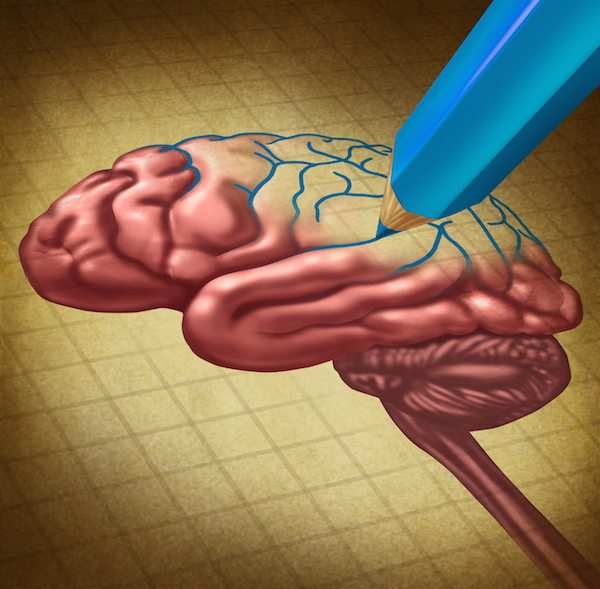
FRIDAY, May 7 (HealthDay News) — At the age of 5, Lauren Ashley began complaining that “her eyes hurt.”
An ophthalmologist who examined her suspected a brain tumor because of swelling of the optic nerve, which sends information from the retina to the brain.
“Looking back, we were so devastated by the news,” said her mother, Diane Ashley. “What we didn’t know then was that what was in store was, in some ways, worse. And I am in no way making light of brain tumors.”
Lauren, now 15 and living in Gahanna, Ohio, was later diagnosed with a severe case of pseudotumor cerebri, a painful condition in which pressure inside the head builds for no apparent reason, potentially causing blindness.
Once found mostly among adults, pseudotumor cerebri seems to be rising among children — and doctors say rising rates of obesity may be to blame. About two-thirds of children diagnosed with the condition are overweight or obese, although one-third, like Lauren, are of normal weight when diagnosed.
“There are no good data on how many children have it, but we believe the reason we seem to see so much of it these days is the increase in obesity among children,” said Dr. E. Steve Roach, chief of neurology and vice chair of pediatrics at Nationwide Children’s Hospital in Columbus, Ohio.
Nationwide is currently treating about 80 children with the disorder, Roach said. The spike in children with the condition led Roach and his colleagues to establish what’s believed to be the nation’s first pseudotumor cerebri clinic geared toward children. The clinic, which just opened, will have an ophthalmologist, neurologist and endocrinologist or weight-loss specialist to provide comprehensive treatment.
Pseudotumor cerebri, sometimes called “phantom tumor,” got its name decades ago. Patients would come to the doctor with headaches and swelling of the optic nerve, Roach said. Pressure would be elevated inside the head, leading doctors to conclude it must be a tumor, only to operate and find nothing.
Diagnosis got easier in the late 70s and 80s with the advent of brain scans such as CT and MRIs, but the name stuck. The condition is also sometimes referred to as idiopathic intercranial hypertension, meaning elevated pressure within the skull with no known cause.
Normally, the brain makes cerebrospinal fluid in the ventricles, or spaces within the brain, which then circulates where it’s needed. Some of the fluid ends up on the outside of the brain, providing a cushion between it and the skull, while some flows to the spinal cord.
In a normal head, the fluid is constantly being made and reabsorbed to maintain the proper pressure inside a closed space, Roach explained.
Pseudotumor cerebri is believed to be tied to a deficiency in the brain’s ability to absorb the fluid. This causes pressure to build and in some people this brings intense, unrelenting pain.
In some, the condition gets better with medications or by losing weight, Roach said. More serious cases can be treated with surgery — either a shunt placed in the lumbar region of the spine to drain excess fluid into the abdominal cavity and relieve the pressure or, if that doesn’t work, neurosurgeons may implant a shunt in the brain to drain excess fluid.
Vision loss occurs when fluid gets pushed into the optic nerve, causing it to swell and damage the axons (nerve branches). To save the eyesight, opthalmologists can cut a “window” in the optic nerve to relieve pressure.
“The loss of vision is very gradual. It shows up first in the peripheral vision,” Roach said. “Kids don’t always recognize they are losing vision until it’s almost gone. We have a nice treatment for this, but one of the things you have to do is treat it early.”
Lauren still faces almost constant pain, even though she takes seven prescriptions a day, has undergone more than 30 surgeries to replace shunts that have stopped working, and been admitted to the hospital more than 50 times.
“I’ve never had a normal life,” Lauren said. “For as long as I can remember, I’ve had these awful headaches that feel like somebody is sticking a knife through my head.”
Because she doesn’t look sick, sometimes friends and even medical professionals don’t understand the seriousness of the condition. “They say, ‘You’re not bald. You’re not in a wheelchair. What’s wrong with you? You look perfectly fine,'” Lauren said.
She goes to school for two classes and completes the rest with the help of an at-home tutor. She enjoys going to youth group at her church when she’s feeling up to it, and keeping in touch with other teens with her condition on Facebook.
Diane Ashley, along with other families of children with the condition, have started a foundation, I.H. Gray Matters (ihgraymatters.org) to raise awareness and money to help families travel to the new clinic.
“The more people get to know what this is and the more doctors know what it is, the more research will get done,” Diane Ashley said. “Maybe one day other kids won’t have to suffer like Lauren does.”
More information
The U.S. National Institute of Neurological Disorders and Stroke has more on pseudotumor cerebri.

